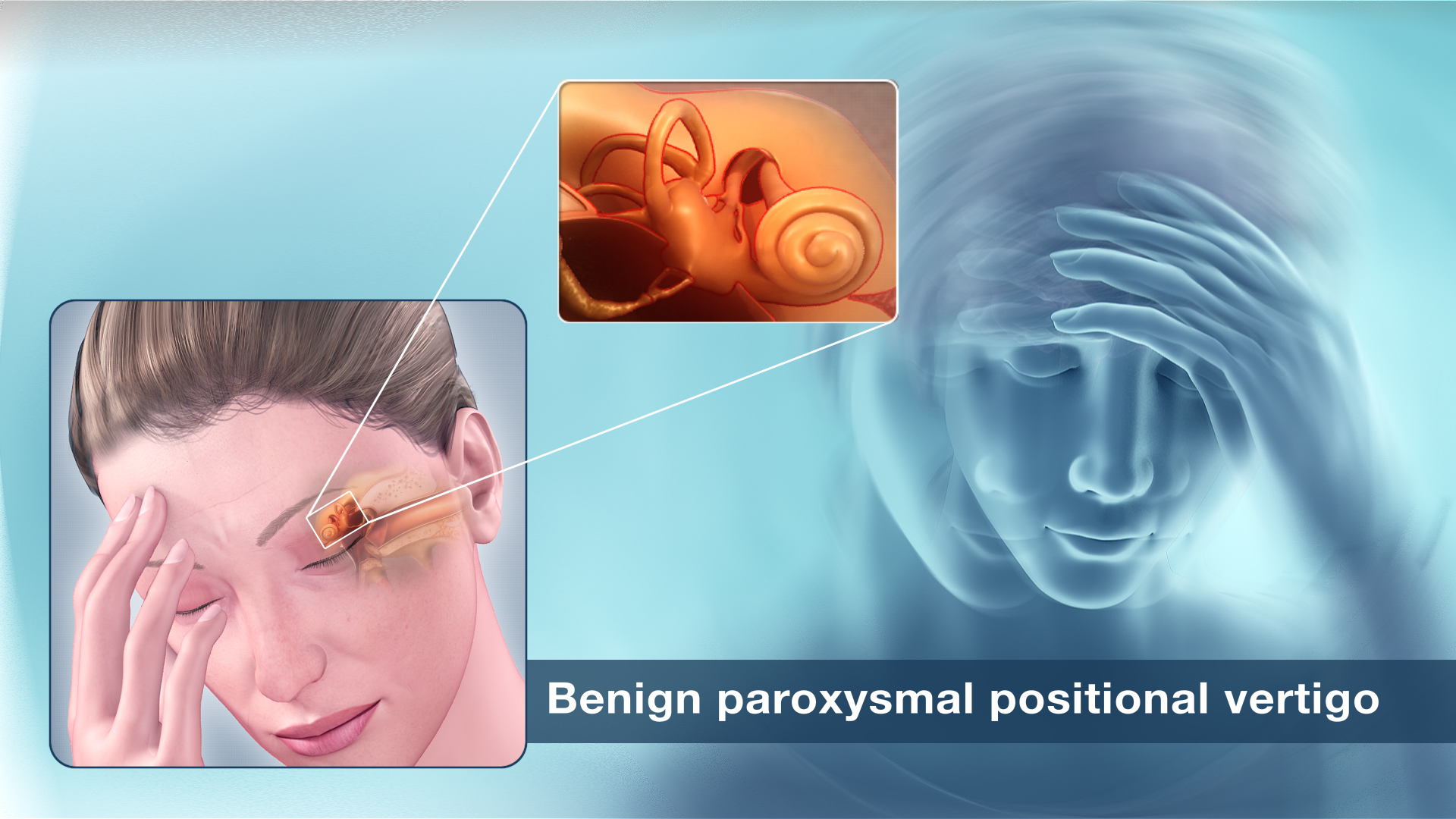Benign Paroxysmal Positional Vertigo (BPPV) is a condition in which the person experiences a sudden sensation of spinning or feeling that a person’s head is spinning from inside. Also known as idiopathic benign paroxysmal positional vertigo, it is deemed as the most common cause of vertigo, a condition in which the person experiences the sensation of swaying or spinning.

Symptoms
Symptoms of BPPV usually last less than a minute and comprise of the following:
- Vomiting
- Nausea
- Dizziness
- Loss of balance
- Blurred vision
- Vertigo
- Unsteadiness
- Lightheadedness
In some cases, abnormal eye movements known as nystagmus are seen to accompany BPV. People suffering from extreme cases of BPV are seen to develop dehydration due to vomiting. Rare cases of BPV include BPV in both ears of the person. All these symptoms are observed when the positioning of head changes.
Causes
While some of the medical resources convey that there is no known cause for BPPV, some say that it is linked to minor or severe trauma or blow to the person’s head.
The other reason for BPPV is an outcome of a disturbance inside the inner ear. In the inside ear, a small organ named vestibular labyrinth is present, which comprises three loop-shaped structures or tubes or semicircular canals. Fluid and fine, hair-like sensors are present in these canals that move as the position of the human body changes and monitor the rotation of the head. These canals are extremely sensitive; hence a slight disturbance can adversely affect the inside ear.
The disturbance results in the introduction of smaller crystals of calcium carbonate from otolith organs of the ear to the semicircular canals. Otolith organs contain these calcium carbonate crystals which make people sensitive to gravity. They can become dislodged for many reasons. When they do so, they can move into any of the semicircular canals which results in BPPV. Due to this, the brain gets to receive perplexing messages about the body’s position. People are also observed to experience dizziness in the majority of the cases.
It has also been observed that BPPV is the result of disorders of the inner ear. Damage sustained in the inner ear during an ear surgery, or persistent positioning on the back like a dentist's chair. BPPV is also found to be related to the migraines.
Treatment
Benign paroxysmal positional vertigo is observed to be treated through a series of head movements prescribed by the doctors around the world. If the person is experiencing recurrent, severe, prolonged, accidental, or unknown dizziness or vertigo, then the person should consult a doctor.
Some physicians are seen to employ the Epley maneuver, as they believe that it is the most effective treatment for BPPV. This technique doesn’t require any specific equipment and can be easily practiced at home. In this exercise, people tilt their heads such that the crystals of calcium carbonate move to their original place, i.e. otolith organs.
Patients around the world are usually prescribed below mentioned drugs by the doctors for obtaining relief from spinning sensations.
- Sleeping aids or sedative-hypnotics
- Antihistamines
- Anticholinergics, which are used to block the neurotransmitter acetylcholine
Tracking the positions which trigger BPPV becomes a very useful aid, as the triggering episodes can be avoided by the patient with the knowledge. Patients who feel dizzy should get seated at once to avert falling and getting injured. Using a cane can be pretty helpful, ensuring that there is proper lighting in the home and surroundings.
Disclaimer: The information in no way constitutes, or should be construed as medical advice. Nor is the above article an endorsement of any research findings discussed in the article an endorsement for any of the source publications.








